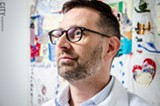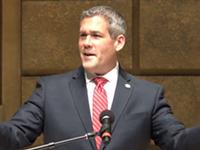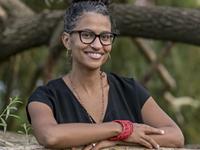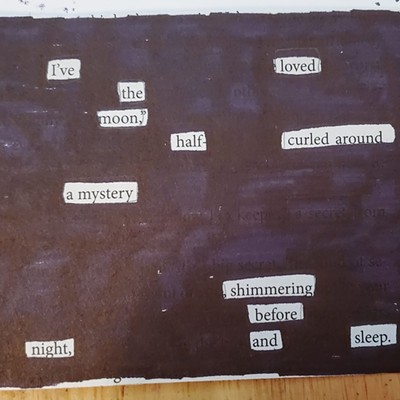[
{
"name": "500x250 Ad",
"insertPoint": "5",
"component": "15667920",
"parentWrapperClass": "",
"requiredCountToDisplay": "1"
}
]
In the more than 30 years since it began appearing in gay men in the New York City, San Francisco, and Los Angeles areas, HIV/AIDS has transformed from a death sentence to what is perceived by many as a manageable health condition.
Still, AIDS is the second-highest killer of New Yorkers ages 25 to 44, according to the Centers for Disease Control. And one thing has remained constant, and controversial: even though most HIV infections are preventable with modifications in behavior, new HIV infection rates in the US remain frustratingly high.
And the rates are actually increasing among gay and bisexual men, the CDC says. One study of HIV rates in 20 US cities estimates that one in five men who have sex with men is HIV positive.
The finding raises numerous questions about the state of safe sex in the LGBT community. Is the prevention message failing to reach men who have sex with men? Has the message been heard and tuned out? Have advances in treatment and care changed views about HIV/ AIDS so much that the prospect of infection is no longer threatening?
And has the scientific community's pursuit of a medical solution come at the expense of advances in preventive health care?
Discussions about HIV transmission and personal responsibility elicit a range of responses in the local and national LGBT communities. Some health workers and community leaders say that it's an issue that needs to be addressed. Others say that the discussion creates an atmosphere of blame and stigmatization.
And they warn that alienation could make prevention messages even harder to effectively communicate.
The annual rate of new HIV infections in the US peaked in the late 1980's at around 130,000, according to the CDC. After a subsequent period of significant decline, the rate has been stuck near 50,000 for several years.
Gay and bisexual men have borne the brunt of the new infections. Even though gay and bisexual men make up around 2 percent of the population, they comprised 63 percent of the new HIV cases in 2010, the CDC says. Between 2008 and 2010, the rate surged by about 12 percent, the agency says.
The numbers are equally sobering closer to home, with more than 180,000 New Yorkers living with HIV/AIDS. The Rochester region has the second-highest infection rate in the state after New York City, according to Trillium Health's website.
The CDC reports that in Rochester, the number of men who contract HIV through sex with infected men is nearly 50 percent of all HIV cases.
Understanding why infection rates have remained high in men who have sex with men is a bit like peeling the layers of an onion, says Sean Murphy, a psychiatric nurse with Trillium.
Murphy has a doctorate in nursing and has worked in the HIV/AIDS field for years. He says that generally, several issues come up when dealing with this group, and that these issues may have been underestimated.
"If you look at HIV, you also have to look at literacy," he says. "To get federal funding for research, any materials you plan to give to patients have to be at a fifth-grade level. And that was reduced from an eighth-grade literacy level. Disease prevention that requires a fifth-grade level of communication is going to be challenging. That's just one layer."
When race and sexuality are taken into account, the matter becomes extremely complicated because some young black males who have sex with men don't identify themselves as gay. Doing so, according to some research, invites more discrimination.
And the situation with white gay and bisexual men is not what many people believe, Murphy says. The stereotype of white gay and bisexual men as educated and with high disposable incomes is far from the reality, he says. There's a lot of poverty in the LGBT community, he says, which makes communication difficult.
But what all of these men have in common, Murphy says, is that they live in a culture that generally still advocates for a separate and unequal society.
"I don't think that we can ever underestimate that even post-'Will and Grace,' the impact of negative messages about being gay," he says.
And he sees a correlation to the work of Anna Freud. The youngest child of Sigmund Freud is considered a pioneer in child psychoanalysis.
"She found that the child that's abused will take on the negative attributes of the aggressor," Murphy says. He says that if you expand that idea culturally, you may have a group of men who feel the abuse is deserved and that their guard against risky behavior may be compromised.
"The message is gayness is fundamentally wrong and that becomes a part of their psychological landscape in ways that they are not even aware of," Murphy says.
Preventive health approaches to reduce HIV infections may also have been undermined by a shifting emphasis on medical approaches, says Dr. Vincent Silenzio, associate professor at the University of Rochester Medical Center.
The safe-sex message was one of the first serious successes in battling HIV, he says. But the campaign has lost its steam, he says.
"We managed to change behaviors just enough to see a change in the rates of infection," Silenzio says. "With the capacity for people to become ill and be in treatment, now people think that it's no worse than if I have to take a statin for my high cholesterol. But wouldn't you rather go through life not taking anything?"
Another issue: gay and bisexual men have less association with the epidemic's early years, Silenzio says.
"Part of the original message was based on loss, but when that loss is not occurring anymore, it's kind of difficult to make that message work in the way that it did when you were confronted with watching people, lovers, and friends getting sick," he says.
Silenzio says that he doesn't want to sound dismissive of new drugs such as PrEP, the daily pill that appears to prevent HIV infection. But he says that bending the curve of new infection rates will require high-risk groups to have access to the pill and to take it as directed. And he says that he's not convinced that will happen.
"The risk of a magic bullet is you shoot the wrong person," Silenzio says.
Speaking of...
Latest in News
More by Tim Louis Macaluso
-

RCSD financial crisis builds
Sep 23, 2019 -
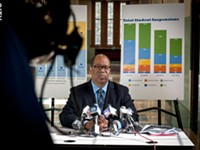
RCSD facing spending concerns
Sep 20, 2019 -

Education forum tomorrow night for downtown residents
Sep 17, 2019 - More »
